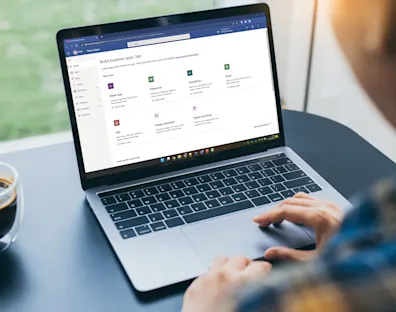

Joris Dijkstra
Technology Strategist, Incentro
3 min read
5 February 2025
Your smartphone as secret weapon in B2B-commerce
The smartphone has become indispensable in the B2C world. From quick purchases in online stores to personalized notifications, the phone is the go-to channel for convenience. Customers have grown accustomed to seamless experiences and accessibility. It’s no surprise that more and more B2B companies are integrating smartphones into their strategies.
Mobile efficiency: From B2C to B2B
As a consumer, you take it for granted: you always have access to everything via your phone. Ordering from your phone while visiting a museum or remotely preheating your car has become completely normal. B2C companies understand that convenience and accessibility directly enhance customer experience—and drive higher conversions.
But what about B2B? For a long time, businesses focused on traditional purchasing factors such as price and reliability, while mobile accessibility was seen as secondary. That perception is changing rapidly. The smartphone is increasingly becoming an essential tool in business processes, especially when speed and flexibility are critical.
The business reality: time for mobile efficiency
The need for mobile efficiency in B2B is clear. Many processes take place outside the office, where mobile access is crucial. Consider the following scenarios:
- Inventory Management: A chef who wants to order extra stock from within a walk-in freezer.
- Maintenance Operations: A technician who needs parts for a repair on-site.
- Agricultural Processes: A farmer who needs to order supplies while out in the field.
Without mobile solutions, these situations lead to delays, increased costs, and frustration. By implementing a mobile strategy, companies can not only speed up processes but also significantly improve the overall customer experience.
Real-world examples: mobile strategies in B2B
B2B companies investing in mobile solutions reap immediate benefits. At Incentro, we’ve helped multiple organizations make their processes mobile-friendly and future-proof. Some examples include:
- The Greenery: We developed an app for growers that streamlines daily operations, making them faster and more efficient.
- MS Schippers: We built a mobile commerce app that works even offline, allowing farmers to place orders from remote locations.
- ViaSana: We co-developed the Motimove app, giving patients more control over their recovery—providing an additional feedback channel for patients while reducing pressure on healthcare services.
Added value through personalization and process support
Smartphones offer more than just system access; they are platforms for personalization and process optimization. Examples include:
- Smart Processes: POS system providers offer mobile tools to help hospitality businesses serve customers faster and work more efficiently.
- IoT Integrations: Products like Tesla’s cars can be fully controlled via a smartphone, significantly enhancing the user experience.
- Targeted User Experiences: Apps that adapt interfaces based on specific roles—such as service technicians or procurement managers—make processes simpler and more relevant.
Conclusion
The First Step Toward a Mobile Strategy
Every successful mobile strategy begins with an analysis of the current situation. What does your platform look like? Where are the bottlenecks? And how can you better support your customers?
At Incentro, we are ready to help. Whether you want to transform your existing platform into a mobile solution, develop new tools, or roll out a full mobile strategy, we’re here to support you every step of the way.

Want to learn more?
Joris Dijkstra
Technology Strategist, Incentro



